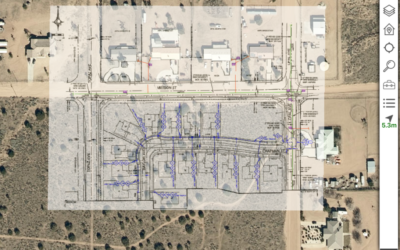Spend less time fixing systems, applications, and data, and more time maximizing performance
The enterprise IT challenge
Today’s construction industry continues to see many large companies digitally transform operations to improve staff decision-making speed and scalability. Indeed, an estimated $50 billion was invested in construction technology between 2020 to 2022. For large and mid-size companies, this includes enterprise resource planning (ERP) and project scheduling tools like Oracle Primavera to enable process efficiencies through better data and analytics.
Yet, complexity slowly introduces itself as companies implement, upgrade, add new features, and support their enterprise IT environment. Over time, isolated and disparate systems, applications, and databases create more work and greater risk for departments. They also increase redundancy and error. Coupled with today’s tough economic climate and pressure to cut costs, this frequently translates into software and data that do not meet intended requirements. The consequences can be severe, including higher ownership costs and lost revenue.
Optimization opportunities exist for those construction companies looking to maximize their IT to gain a business edge. By modernizing your IT environments through integrations, architectures, and more, you can connect enterprise systems to streamline processes and improve data and analytics. Moreover, you remove the IT “spaghetti” that gets in the way of day-to-day activities as well as long-term planning. You empower the organization to accelerate project delivery rather than fixing and managing technology.
When technology needs assistance
For large and mid-size construction companies, both in public and private industries, managing capital improvement projects presents a plethora of challenges. The sheer size and scale of the project, as well as scheduling, funding, resources, personnel, and oversight, all add to the difficulties in delivering projects on time and budget.
Most companies today employ an enterprise ERP system to handle many backend functions. And further still, most companies have invested in project control systems to help with planning, scheduling, and controlling the many aspects involved in program management. Yet many users still rely on spreadsheets and individual databases for day-to-day activities or monthly planning.
Why? Because today’s projects involve greater scrutiny and transparency than ever. More oversight and governance results in more ad-hock queries and reporting. It also means more accurate data is needed for projects to be planned, sequenced, and budgeted, particularly for large-scale endeavours such as new infrastructure (railways, highways, etc.).
Many companies employ Oracle Primavera P6 as a comprehensive enterprise resource planning (ERP) solution that streamlines construction and engineering processes. The solution synchronizes schedules, removes bottlenecks, and delivers actionable insights in real-time. Yet many companies fail to connect that system to other software and databases. By doing so, it extends invaluable data, tools, and applications to more departments across the enterprise.
When systems aren’t connected, or worse—when a company deploys homegrown applications and legacy IT—they often l spend an inordinate amount of time fixing data and churning out reports. They use isolated databases, applications, and processes to perform day-to-day tasks. And because the different systems and applications don’t “talk to each other,” resource allocation, funding, and forecasting beyond a year becomes difficult.
Data and workflow redundancies occur and create a lack of cohesion and visibility throughout the project. This inherently impacts planning and resource allocation, creating inefficiency. Managing and maintaining these disconnected applications and data becomes an inefficient and arduous undertaking.
That’s why modernizing your construction IT matters more than ever. Companies looking to survive and thrive in 2023 must transform into effective data-driven organizations. They gain the speed, agility, and foresight needed to remain competitive and profitable only by streamlining and optimizing information as an important asset—the same as the people and resources deployed on a project.
The seamless enterprise
With a modern IT environment built on connected systems, focused software solutions, and data management best practices, organizations can spend less time maintaining disparate applications and databases and more time effectively carrying out projects.
Modernizing your IT environment for construction projects streamlines project management, governance, funding, forecasting, and monitoring processes. Program managers, directors, heads of project controls, assets managers, portfolio directors, and more can successfully deliver capital improvement projects using proven enterprise tools and information. You enable a modern construction enterprise by integrating systems and removing homegrown applications and patchwork solutions.
The question becomes, how do you address modernizing your operations? For many, this can involve five critical areas for improvement:
Project controls architecture — With the right architecture in place, such as robust cost management combined with schedule management, you have complete information and a “golden thread of truth” for budgeting. Rather than scrambling to produce spreadsheets to answer monthly budgeting issues, you take advantage of automated rules, systemized contracts, prescribed behaviours and timescales, fixed response timelines, and more.
Business planning — You must apply the right data and analytics to develop long-term strategic business plans. Begin by asking questions about what the organization will do seven, eight, or nine years from now. What would my rates be? What would my resources be? You need to forecast to build a roadmap that guides decision making accurately.
Database administration — Create processes and procedures for collecting, organising, and accessing data to support productivity, efficiency, and decision-making. Perform data management and cleansing services, including daily data integrity and redundancy checks. This ensures applications perform well because they are fueled with accurate, timely, and complete information.
License management — Take an orderly approach to monitor and maintain your organization’s various software licenses as part of the overall software asset management strategy. This involves the process of documenting and controlling total IT costs, as well as working with vendors for questions, concerns, and more.
Integration — Increase productivity and accuracy by integrating your key business systems. This allows for centralized access and control over the daily processes, which increases the efficiency of the entire project lifecycle. You remove the legacy methods and applications (like spreadsheets) to get work done in less time using all apps and data from one entry point.
Trust experts in IT delivery
Locana has become a trusted IT partner with extensive services, relationships with vendors like Oracle, and extensive experience working in the construction industry. We can recommend software and solutions specific to your unique needs and help manage software vendor contractors and contracts.
And our support services mean we understand how to get the buy-in from business users. While many organizations looking to modernize may lament the pressure of introducing new tools to users—afraid they may face resistance to move from the previous ways of doing—Locana employs change management techniques that ensure adoption.
Part of this involves taking users through the journey. While IT projects can take several months to fully implement and launch, you can use a scalable approach that includes former methods along with the latest techniques that come online. For example, you can maintain reporting using the “old world” processes while integrated applications begin simultaneously.
Locana removes the burden of backend software, application, and data management. This lowers client costs and risks. With Locana implementing, calibrating, and managing the software, servers, support, integrations, performance, and security duties, organizations can dedicate time and resources to carrying out project tasks. In addition, Locana can accommodate and operationalize new requirements as they are identified or requested.
Our strategic methodology involves four key steps.
- Discovery: through workshops, interviews, and assessments, we gain insights into what the current IT environment looks like to identify what the real challenges may be, including people, processes, products, and environment.
- Design: after careful assessment and collaboration, we develop a detailed strategy that includes goals and objectives, as well as defining the right architecture, services, databases, products, versions, and more to support the business and IT needs.
- Implementation: we then deploy solutions, which can include software installation, server build, configuration, data loading, and training, go-live launch.
- Support: we provide ongoing support services that include feedback cycles, maintenance, monitoring, software upgrades, and continuous communications.
Modernizing the right way
For those construction companies looking to modernize and digitally transform their IT, the right strategy, tools, and techniques matter. By developing and implementing the proper architecture, integrations, applications, data services, and more, you enhance data delivery and analytics that support timely decisions to improve your entire capital project lifecycle.
That’s where Locana can help. We employ our proven methodology and delivery services, developed over decades of working with some of the world’s leading construction companies, to optimize your technology environment. You can automate and replace time-consuming, labor-intensive work with streamlined processes. You can ensure data accuracy and transparency throughout the organization. And you improve decision-making at every level, ensuring successful project delivery and profitability even in turbulent times.
***
To find out more about how you can deliver projects on time and budget with modern GIS solutions, contact us today or visit our construction industry page.


